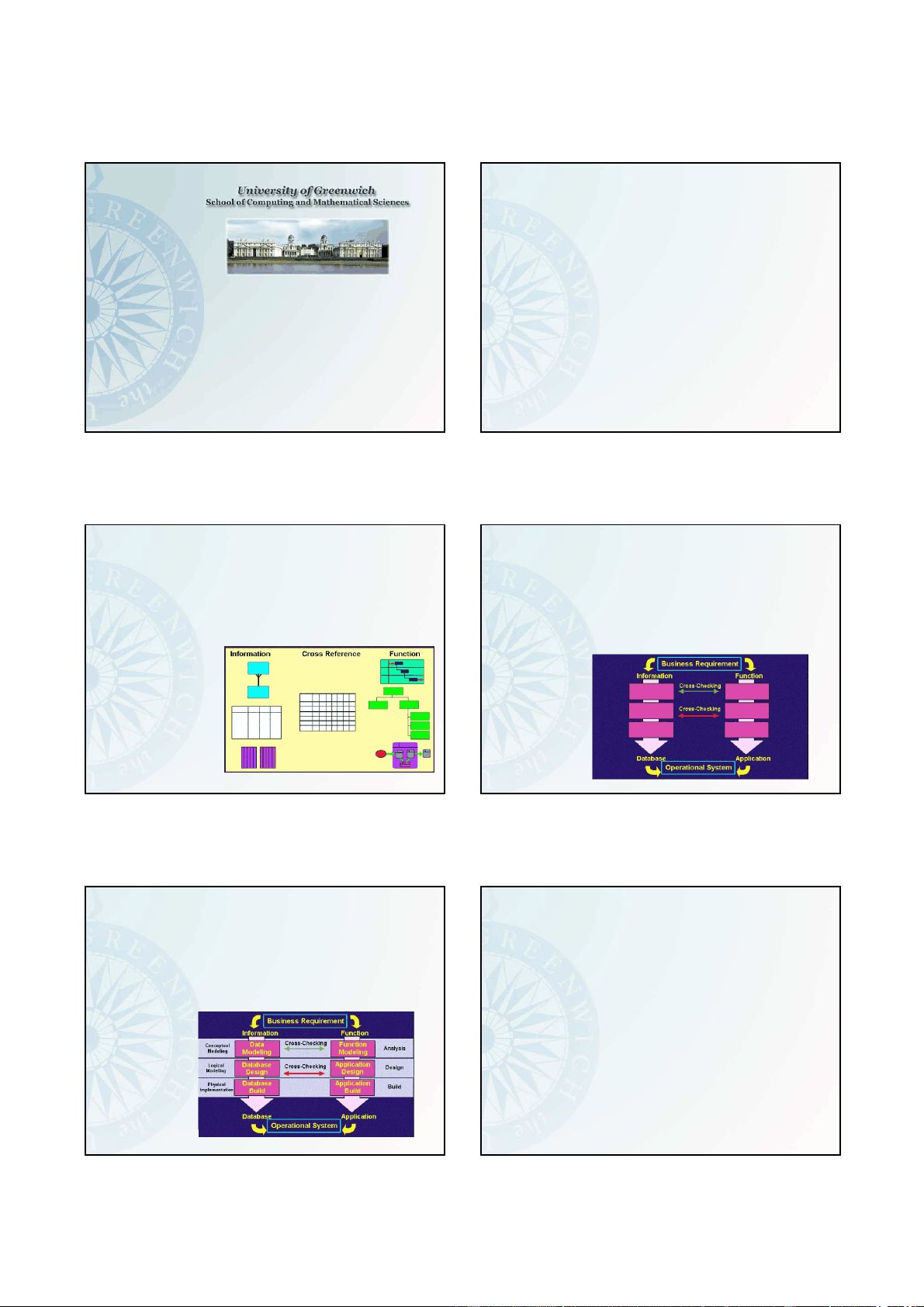
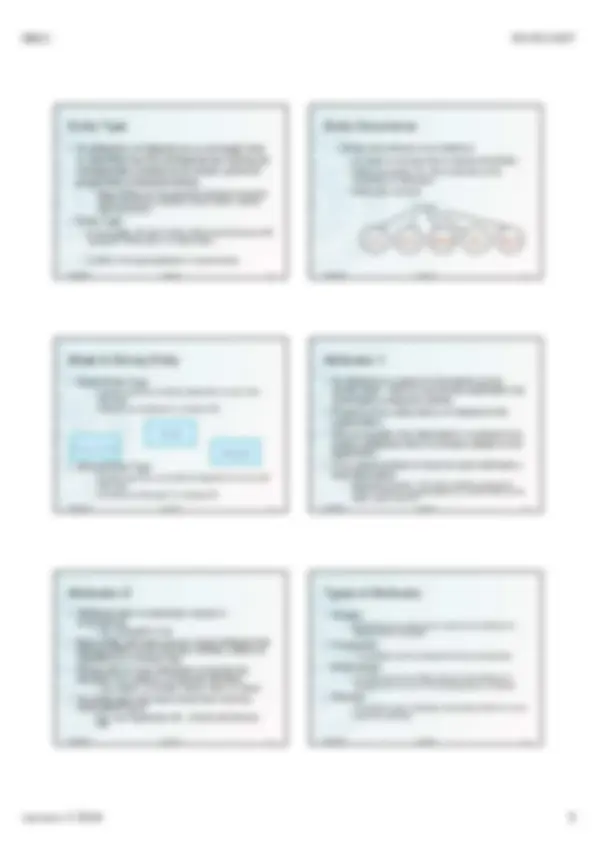
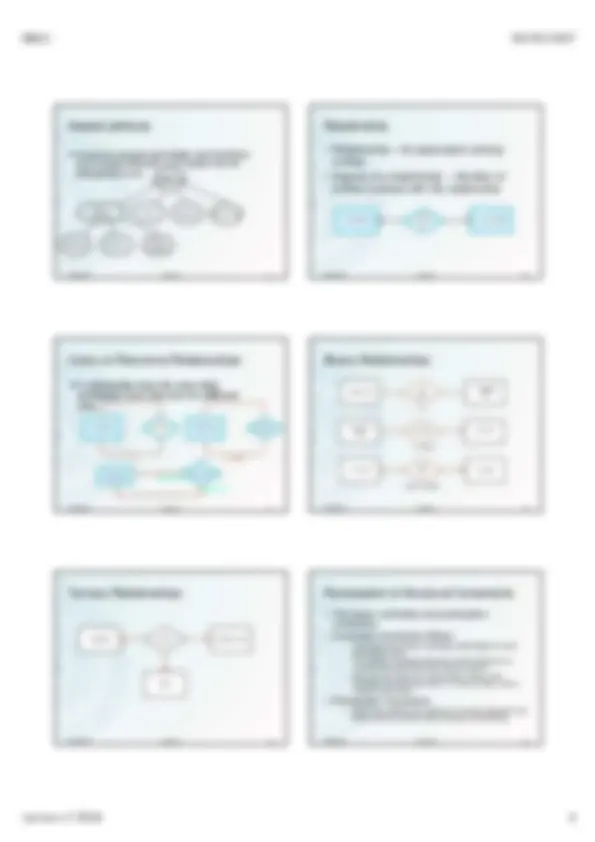
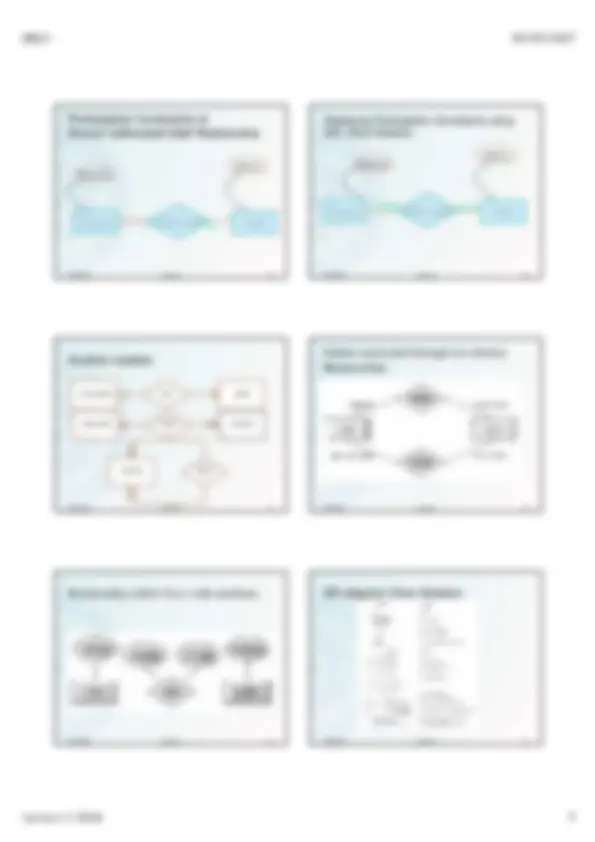
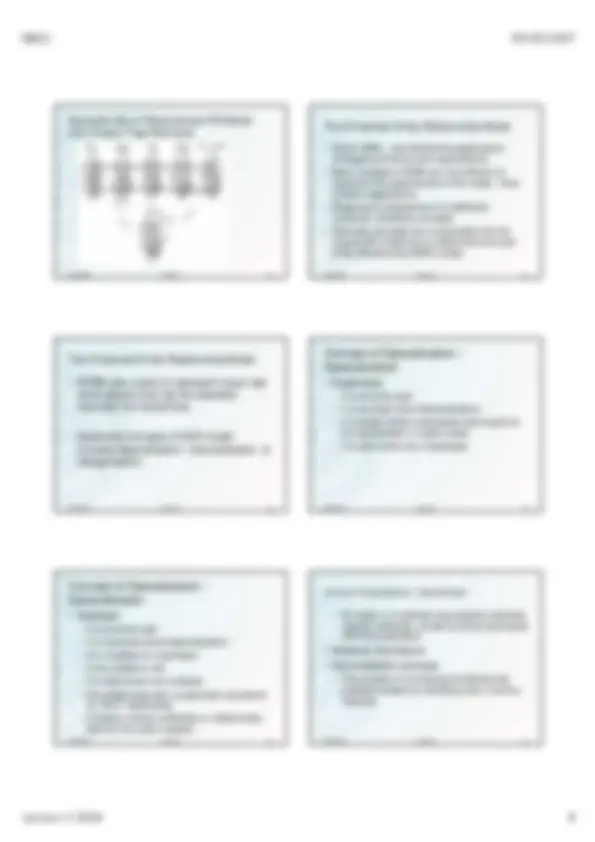
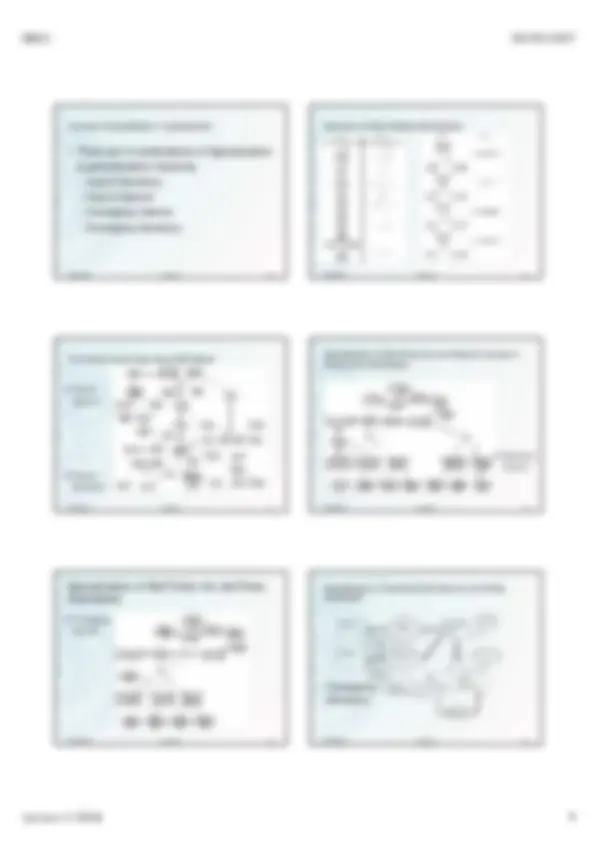
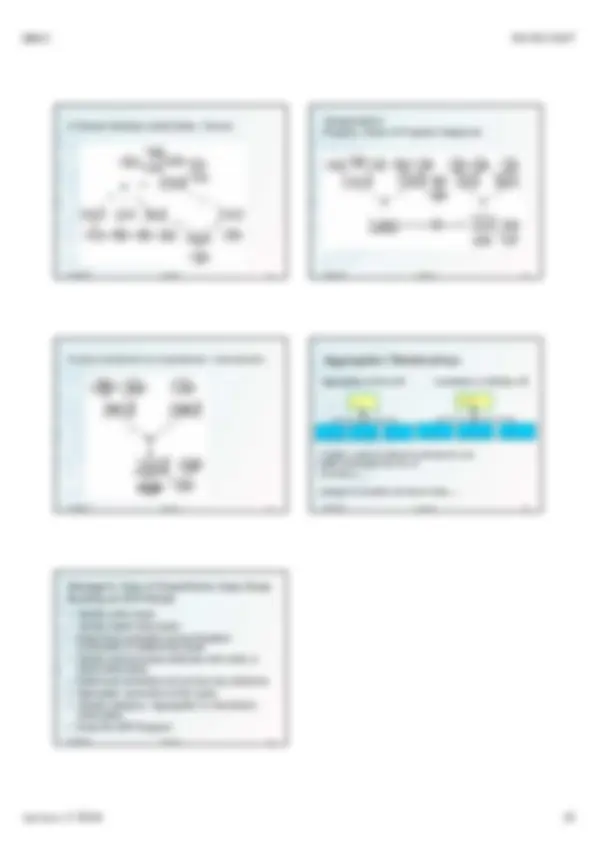


Study with the several resources on Docsity

Earn points by helping other students or get them with a premium plan


Prepare for your exams
Study with the several resources on Docsity

Earn points to download
Earn points by helping other students or get them with a premium plan
Community
Ask the community for help and clear up your study doubts
Discover the best universities in your country according to Docsity users
Free resources
Download our free guides on studying techniques, anxiety management strategies, and thesis advice from Docsity tutors
"Detailed informtion about Conceptual Data Modeling, Systems Development techniques, Database Design Process, Phases of Database Design,Approaches for data model development, E-R Modeling."
Typology: Study notes
1 / 10

This page cannot be seen from the preview
Don't miss anything!







The slides are based on the textbooks Database Systems by Connolly & Begg & Fundamentals of Database Systems by Elmasri & Navathe 30/05/2007 Lecture 2 2
Lecture’s Objectives
30/05/2007 Lecture 2 3
30/05/2007 Lecture 2 4
Conceptual, Logical & Physical Models
/
30/05/2007 Lecture 2 5
Conceptual, Logical & Physical Models
/
30/05/2007 Lecture 2 6
Data Modeling, ERD /
30/05/2007 Lecture 2 7
Data modeling, ERD /
30/05/2007 Lecture 2 8
Data modeling in the Systems
Development Lifecycle
Implement the transformed Logical model into a Physical Model “ Do it ”
Transform CDM into Logical Data Model “ How ”
30/05/2007 Lecture 2 9
30/05/2007 Lecture 2 10
Phases of Database Design
30/05/2007 Lecture 2 11
Approaches for data model
development
30/05/2007 Lecture 2 12
E-R Modeling
30/05/2007 Lecture 2 19
Nested attribute
30/05/2007 Lecture 2 20
Relationship
Taught by
30/05/2007 Lecture 2 21
PERSON Married to EMPLOYEE Manages
1-TO-1 1-TO-MANY
Unary or Recursive Relationships
30/05/2007 Lecture 2 22
Binary Relationships
is given
Contains PRODUCT
Enrol in
30/05/2007 Lecture 2 23
Ternary Relationships
VENDOR Ships WAREHOUSE
30/05/2007 Lecture 2 24
Participation & Structural Constraints
30/05/2007 Lecture 2 25
Participation Constraints of
Branch IsAllocated Staff Relationship
30/05/2007 Lecture 2 26
30/05/2007 Lecture 2 27
Another notation
Assigned to
Married to
30/05/2007 Lecture 2 28
Entities associated through two distinct
Relationships
30/05/2007 Lecture 2 29
Relationship called Views with attributes
30/05/2007 Lecture 2 30
ER-diagram Chen Notation
30/05/2007 Lecture 2 37
Semantic Net of ER Model with Fan
Trap
30/05/2007 Lecture 2 38
Staff
IsAllocated
1
Branch
M
Division
Operates
1
Restructuring ER model to remove Fan
Trap
30/05/2007 Lecture 2 39
Semantic Net of Restructured ER
Model with Fan Trap Removed
30/05/2007 Lecture 2 40
An Example of a Chasm Trap
30/05/2007 Lecture 2 41
Semantic Net of ER Model with Chasm
Trap
30/05/2007 Lecture 2 42
ER Model restructured to remove
Chasm Trap
30/05/2007 Lecture 2 43
30/05/2007 Lecture 2 44
30/05/2007 Lecture 2 45
30/05/2007 Lecture 2 46
Concept of Specialization /
Generalization
30/05/2007 Lecture 2 47
Concept of Specialization /
Generalization
30/05/2007 Lecture 2 48
30/05/2007 Lecture 2 55
30/05/2007 Lecture 2 56
30/05/2007 Lecture 2 57
30/05/2007 Lecture 2 58
Aggregation Relationships
30/05/2007 Lecture 2 59